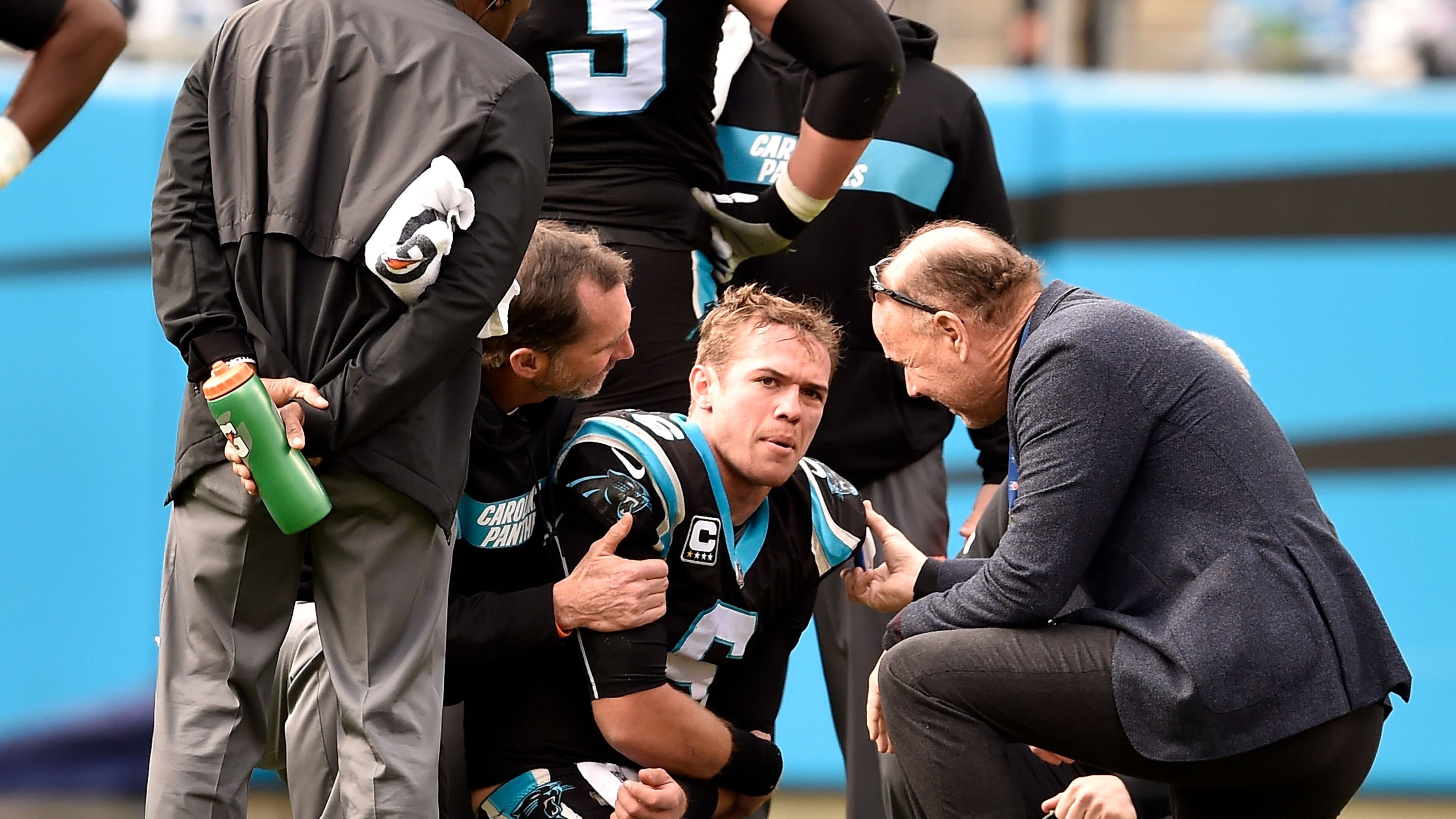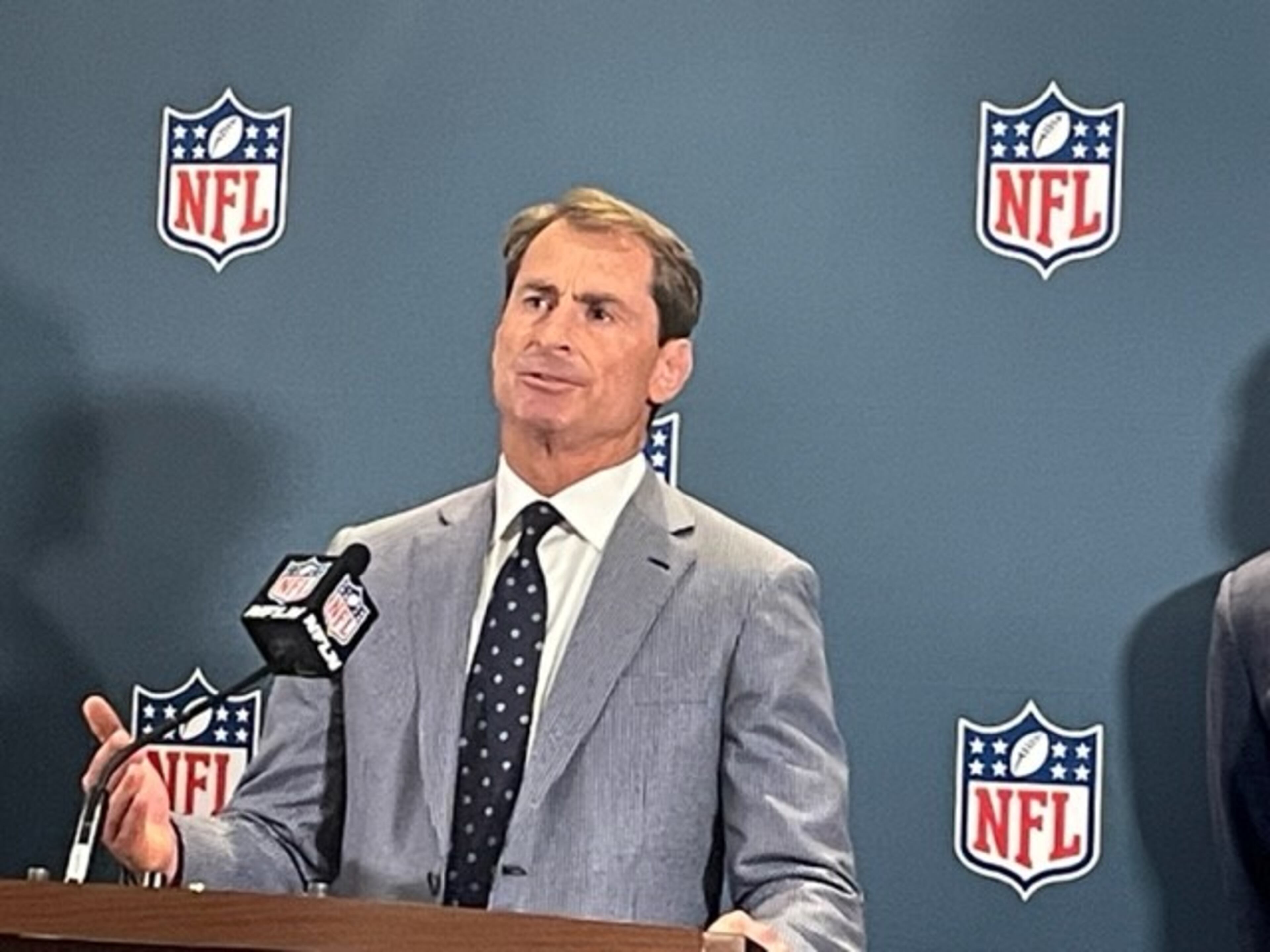NFL starts program with HBCUs to increase diversity in sports medicine

The NFL, along with the NFL Physicians Society and the Professional Football Athletic Trainer Society, will start a program with four Historically Black Colleges and Universities medical schools, including the Morehouse School of Medicine, to increase diversity in the sports medicine field and within the league’s 32 teams.
Eight teams, including the Falcons, will take part in the initiative, which will provide medical students a clinical rotation with NFL teams’ medical staffs during the 2022 season.
“What excites me about this program is not just the benefit for the NFL but the benefit for medicine as a whole,” said Dr. Allen Sills, the NFL’s chief medical officer. “What we’re trying to help address here is not just an NFL problem, it’s really something that’s widespread across medicine, and that’s a lack of diversity.”
Medical students from Morehouse School of Medicine, Charles R. Drew University of Medicine and Science, Howard University College of Medicine and Meharry Medical College will be selected by their schools to complete one-month clinical rotations with NFL teams.
The program will start with 16 students, two students each with the Falcons, Cincinnati Bengals, Los Angeles Chargers, Los Angeles Rams, New York Giants, San Francisco 49ers, Tennessee Titans and Washington Commanders.
In 2023, the program will expand to recruit students from additional academic institutions and medical disciplines and place those students with medical staffs at more NFL clubs.
“The NFL can be proactively part of the solution,” Sills said. “So, while you know this will benefit us, I think there’s going to be such a broader benefit beyond just the NFL.
“Hopefully this is just one step. We have a number of other initiatives and plans in progress. But this is one that I think we can point to as a really tangible, positive thing.”
The NFL expects the program to grow to include all 32 medical staffs in the future.
“What I’m proud of is that how our clubs have been so enthusiastic,” Sills said. “From the moment that we mentioned it, the response from the teams, at all levels, medical staff, administrative staff (and) coaching staff, has been really, really positive. This is just a great step forward for the league as a whole and certainly for the schools and the students.”
“What we're trying to help address here is not just an NFL problem, it's really something that's widespread across medicine, and that's a lack of diversity."
Dr. Hugh Mighty, the dean of Howard’s College of Medicine and senior vice president of health affairs, said there is a high level of interest in sports medicine among his student body.
“The benefit for us is that it’s another pipeline,” Mighty said. “We’re exploring as many avenues as we can to get minority Black physicians into more roles than have been previously open to them. I see this as a pathway for a better connection.”
Most medical doctors usually train in family medicine or orthopedic surgery before entering sports medicine, according to Mighty.
“Then you discover what sports medicine is all about when you meet teams, college teams, whether it be professional teams,” Mighty said. “Here, we’re given an opportunity for early exposure to learn.”
Players in the leagues are not underrepresented.
“If you think about the makeup of the NFL, the NBA, so many of those athletes are Black athletes,” Mighty said. “The physicians, the health-care providers have become, not role models, but sometimes they can help people with health. Not just fixing your joints but taking better care of themselves and their families.”
At Howard, the program has been broadcast widely to the medical students and some who are doing their residencies. Mighty said they’ll have to turn some students away.
“The students want to sign up,” Mighty said. “They want to be a part of this.”
Dr. Timothy McAdams, San Francisco’s head team physician, is a member of the NFL physicians society.
“We just looked at medical students in general; we know that almost less than 6% of medical students are Black compared to 13.5-or-so percent of the (U.S. population is Black),” McAdams said. “So, that’s unrelated to medical students to begin with. Really look at sports medicine, orthopedics or orthopedic residences, only about 4% of orthopedic residents are Black. So, there’s been an initiative to push that as well.
“When you specifically look at our physicians society, we only have 5% Black members, and that doesn’t come close to mirroring the athletes that we treat. NFL players are over 70% Black, so we need to be better.”
The first-year students will be surveyed at the end of the medical rotations.
“It’s going to be very important to gather with each of these 16 students afterward to get their feedback,” McAdams said. “We’re going to lean heavily on their experience, their exposure, their recommendations and how to improve it as we work to expand it in the future.”
The medical meetings at the NFL scouting combine in March 2023 will be key for the program.
“I want to bring all of the students that go through this year to reconvene with us and help share their experiences,” McAdams said. “We can figure out ... the best next steps.”
The NFL also hopes the program will highlight that there are many more careers that are a part of sports medicine.
“Now we recognize that it’s orthopedic surgery, but it’s also primary care, sports medicine,” Sills said. “Then when you look beyond physicians, you’ve got athletic trainers, and you’ve got strength-and-conditioning coaches, performance specialists and sports scientists and nutritionists, the behavioral health clinicians, literally, sports-medicine departments, and NFL teams are all pro sports teams now, have a variety of professionals.”





